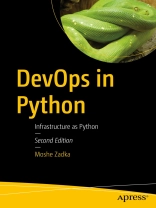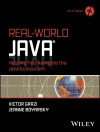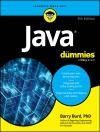Take advantage of Python to automate complex systems with readable code. This new edition will help you move from operations/system administration into easy-to-learn coding.
You’ll start by writing command-line scripts and automating simple Dev Ops-style tasks followed by creating reliable and fast unit tests designed to avoid incidents caused by buggy automation. You’ll then move on to more advanced cases, like using Jupyter as an auditable remote-control panel and writing Ansible and Salt extensions.
The updated information in this book
covers best practices for deploying and updating Python applications. This includes Docker, modern Python packaging, and internal Python package repositories. You’ll also see how to use the AWS API, and the Kubernetes API, and how to automate Docker container image building and running. Finally, you’ll work with Terraform from Python to allow more flexible templating and customization of environments.
What You’ll Learn
-
Understand operating system automation with Python
-
Package Python applications
-
Use Python as a Dev Ops console
-
Review Cloud automation with Python
Who This Book Is For
Dev Ops engineer. Site Reliability Engineer, or similar (including Platform, Production, and Systems), and whose organization uses Python.
Inhaltsverzeichnis
Chapter 1: Installing Python.- Chapter 2: Packaging.- Chapter 3: Interactive usage.- Chapter 4: OS Automation.- Chapter 5: Testing.- Chapter 6: Text manipulation.- Chapter 7: Requests -> httpx.- Chapter 8: Cryptography.- Chapter 9: Paramiko.- Chapter 10: Salt Stack.- Chapter 11: Ansible.- Chapter 12: Containers.- Chapter 13: AWS.- Chapter 14: Kubernetes.- Chapter 15: Terraform.
Über den Autor
Moshe has been involved in the Linux community since 1998, helping in Linux “installation parties”. Moshe has been programming Python since 1999 and has contributed to the core Python interpreter. Moshe has been a Dev Ops/SRE since before those terms existed, caring deeply about software reliability, build reproducibility, and other such things. They have worked in companies as small as three people and as big as tens of thousands – usually in someplace around where software meets system administration.












